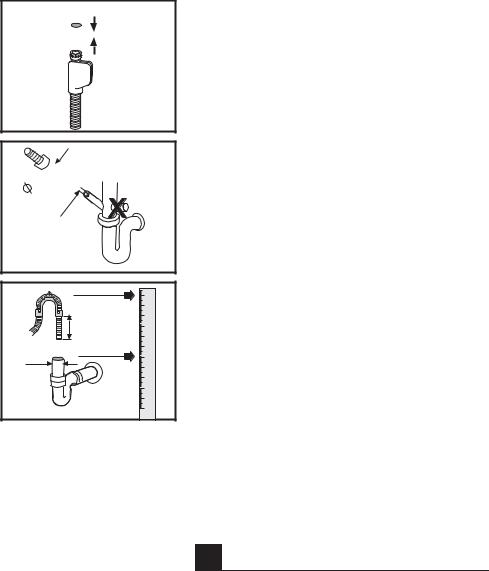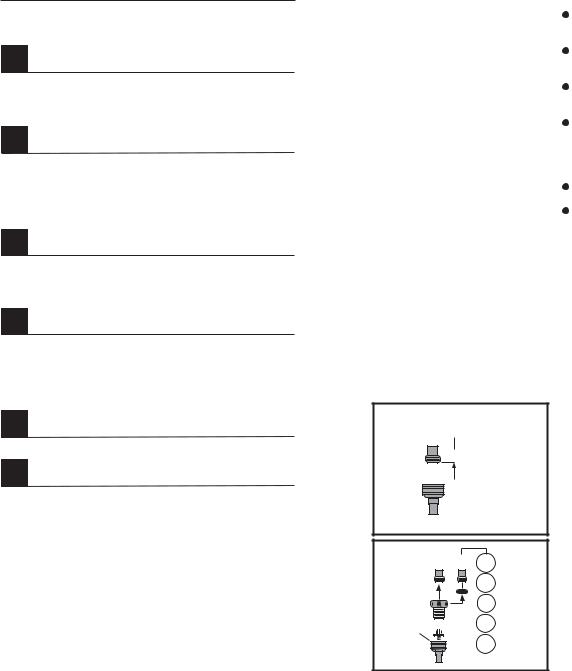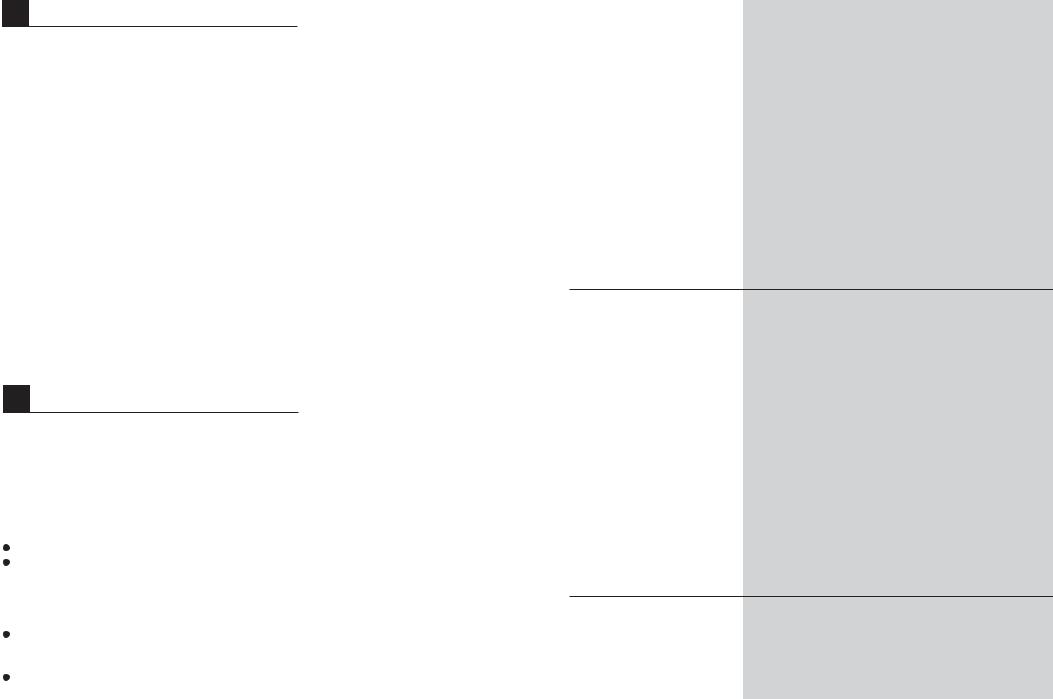Blomberg GSS 1380, GIS 1380 X Instruction Manual

3/4”

 min 10
min 10
AQUASAFE+
21

 18
18
max 110 cm |
110 |
|
100 |
||
|
||
12cm |
70 80 90 |
|
min 50 cm |
60 |
|
50 |
||
min 4cm |
||
40 |
||
|
30 |
|
|
20 |
|
|
10 |
|
|
0 |
AQUASAFE+ (depends on the model)
The Aquasafe+- system protects you from water damage which may be caused at the water inlet hose.
Do not immerse the system’s valve box into water; it contains electrical components.
In case of damage, pull out the power supply plug. Do not shorten or lengthen the hose insert, since it contains electrical cables and components.
Water drainage
Connecting the drainage hose.
Take care to ensure that the water intake hose is not bent or squeezed.
Check that the drainage hose is firmly seated in place.
Extension hoses
If a hose extension is required, a drainage hose of equal quality must be used
The maximum length must not exceed 4m. Otherwise, the machine’s cleaning process is negatively influenced.
Siphon connection
The drainage height must be between 50 and 100 cm above the floor.
Use hose clamps to fasten the drainage hose to the siphon.
Electrical connection
Please refer to the type plate for information on current type, mains voltage, and fuse protection.
The type plate is located on the inside of the door.
The mains plug must be freely accessible after installation. Power cables and insulated cables must not be accessible after installation.
11 Service
If your machine ever experiences faults in operation, check the notes and advice in the operating manual.
If this does not fix the problem, our customer service staff is available to you.
Dear customer,
Before starting, it is essential that you read carefully right through the installation and operation instruction booklet before plugging in to the mains socket. The following instructions should prevent the risk of personal injury and/or damages to the machine.
Please keep these documents for later reference in a safe place.
This operating manual has been written for different machines and some of the features mentioned here may not apply to your specific machine.
23

Table of contents |
|
|
Introduction |
|
|
1 |
Disposal |
Page 3 |
|
Recycling............................................................. |
3 |
|
Disposal of your old machine.............................. |
3 |
2 |
Safety Instructions |
Page 3 |
|
Before installation................................................ |
3 |
|
Before first use .................................................... |
3 |
|
Children’s safety.................................................. |
4 |
|
For daily operation .............................................. |
4 |
|
In the case of problems....................................... |
4 |
3 |
Get to know your machine |
Page 5 |
|
View of the machine............................................ |
5 |
|
Control panel....................................................... |
5 |
4 |
How to use your dishwasher |
Page 6 |
|
Softening water ................................................... |
6 |
|
Filling the dishwasher salt ................................... |
7 |
|
Filling the rinse aid dispenser ............................. |
8 |
|
Filling the detergent dispenser............................ |
8 |
|
What should not be washed |
|
5 |
in your dishwasher |
Page 10 |
6 |
Loading the dishwasher |
Page 10 |
|
General ............................................................. |
10 |
|
Lower basket ..................................................... |
11 |
|
Cutlery basket ................................................... |
11 |
|
Upper basket..................................................... |
12 |
3/4”
 min 10
min 10
3/4” 1/2” CH
DK
S
3/4”  N
N
SF
Installing your dishwasher
Choose a suitable location for your dishwasher. Take care to ensure that the machine is standing safely and levelly.
Unevenness in the floor can be equalised by adjusting the screw feet. When the machine is standing correctly, the door can be closed without difficulties.
Water inlet and drainage hoses must be placed so that they can move freely in order to avoid bending or squeezing them.
The machine may not be hooked up in rooms with a temperature below 0° Celsius.
Water connection
The dishwasher may be connected to cold and warm water to a max. temperature of 60° Celsius.
The dishwasher may not be connected to open warm water devices and flow-through water heaters.
Permissible water pressure:
Lowest permissible water |
When the water pressure is |
pressure: |
below 1 bar, please contact your |
0,3 bar = 3 N/cm² = 30 kPa |
technician. |
Highest permissible water |
When the water pressure is above |
pressure: |
10 bar, a pressure reduction valve |
10 bar = 100N/cm² = 1MPa |
must be installed (available in trade |
|
supply stores). |
Connect water inlet hose
Take care to ensure that the water inlet hose is not bent or squeezed. Do not install a used hose set.
Use a screw-on hose connector to connect the water inlet hose to a water tap with an external thread with a measurement of 3/4 inches.
If required, use a filter inset to filter deposits from the pipes.
Check that the connection does not leak.
 Attention
Attention
For safety reasons, close the tap after every rinse process.
22
1

9 Technical features
Load capacity |
10 |
Permissible water pressure |
0,3 –10 bar (= 3 – 100 N/cm² |
|
= 0,01-1,0Mpa) |
Electrical connection |
230 Volt, 10 Amps |
|
(see type plate) |
Total power |
2000 W |
Heater power |
1800 W |
Because we continually strive to improve our products, we may change our specifications and designs without prior notice.
This device corresponds to the following EU Directives:
73/23/EC |
Low Voltage Directive |
89/336/EC |
EMV directive |
93/68/EC |
CE identification directive |
DIN EN 50242 |
Electric dishwasher for |
|
domestic use Testing method |
|
for utilization properties |
10 Directions for assembly
Safety notes for installation
Prior to installing and using your machine, please check it for possible transport damage.
If the machine is damaged, please contact your supplier. Never install and use damaged machines.
The following directions must be observed in order to connect the dishwasher properly.
Make sure that the data on the type plate correspond to the current and voltage of your power supply connections before putting the machine into operation. The connection of the machine may only be made using a properly grounded socket. Ensure that the grounding is in accordance with regulations.
The grounded socket must be easily accessible and close to the machine.
Do not use extension cables or multiple adapters.
There is a possibility of fire hazard through overheating.
Hardwiring may only be carried out by a qualified electrician.
Check the power cable, the water inlet hose and the drainage hose. Damaged parts may only be exchanged by customer service personnel or by a qualified electrical service expert.
7 How to clean your dishwasher |
Seite |
13 |
Cleaning the filters ............................................ |
|
14 |
Cleaning the spray arms ................................... |
|
15 |
Cleaning the filter inset ..................................... |
|
15 |
8 Trouble shooting What, if.... |
Seite 14 |
|
The dishwasher will not run .............................. |
|
14 |
The cleaning results are unsatisfactory ............ |
15 |
|
9 Technical Data |
Seite 21 |
|
10 Directions for assembly |
Seite 21 |
|
Safety notes for installation ............................... |
|
21 |
Installing your dishwasher................................. |
|
22 |
Water connection .............................................. |
|
22 |
Water drainage.................................................. |
|
23 |
Electrical connection ......................................... |
|
23 |
11 Service |
Seite |
23 |
2
21

1 Disposal
Recycling
The packaging and some parts of your machine are made from recyclable materials. These materials are marked up with recycling symbol and material type information (PE, PS, POM).
Remove the packaging material and dispose of it in accordance with regulations prior to taking the machine into operation.
 Warning
Warning
Packaging materials may be dangerous to children. Reusable substances may be dropped off at the local disposal facilities. You may obtain further information from the authorities and disposal facilities.
Disposal of your old machine
Dispose of your old machine in accordance with the disposal guidelines which are in effect at the location where you reside. To avoid dangers, please make the machine unusable until the time of transport.
Pull out the mains plug and cut the power cable. Render the door lock unusable.
2 Safety Instructions
Before installation
Check the machine for transport damages. Never install and use damaged machines. If in doubt, contact your supplier.
Before first use
See Notes for Installation on page 22.
Have the grounding system installed by a qualified electrician.
The manufacturer cannot be hold liable for any damages that are due to operating the machine without proper grounding.
Before operating the system, please check that the data given on the type plate are in accordance with the data of your power supply.
The dishwasher must be separated from the mains during installation.
|
|
|
Dishes break |
|
|
|
|
|
Possible causes |
|
How to fix these problems |
- |
Improper loading |
- |
Load the dishwasher as suggested in the directions. |
- |
Overloaded baskets |
- |
Do not overload the dish baskets. Dishes may hit against |
|
each other and break. |
Foam
Possible causes
-The dishes were pre-washed by hand with a large amount of dish detergent
-Rinse aid has accidentally leaked into the machine
-The cover of the rinse aid dispenser was not closed.
How to fix these problems
-Dishes do not need to be pre-washed. Coarse dirt may be removed with a dishcloth, or you may hold the dishes under running water.
-If rinse aid has been spilled during refilling, remove the agent using a paper cloth or sponge.
-Always take care to ensure that the lid is closed after refilling the rinse aid dispenser.
Water remains inside the machine after the rinse cycle
|
Possible causes |
|
How to fix these problems |
- |
Clogged filters |
- |
Clean all strainers and filters as described in the manual |
- |
Drain hose bent. Relief hose |
- |
Ensure that the relief hose is properly placed. |
|
blocked or bent. |
|
|
20
3
